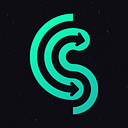The Internet has changed people’s everyday life by revolutionizing communication and commerce. It serves as a virtual networking medium allowing computer networks all over the world to communicate. Nowadays, Internet has a myriad of key applications such as e-commerce, online banking, file transmission, social networking, among others.
Since its inception, the Internet has seen enormous changes. Over the previous few decades, websites and web applications have evolved considerably starting from Web 1.0 to the current Web 3.0.
The evolution of the Internet began in the early 1990s which was built on what is now referred to as Web 1.0. In this period, websites were constructed using static HTML pages that could only show information, and a lot of people had personal websites hosted by ISPs or free web hosting services. Web 1.0 has few content developers and a great majority of content consumers.
The second iteration of the Internet is now known as Web 2.0 began in 2004 when users started to generate and share material online and use the web as a content platform through the use of databases, server-side processing, and social media. Web 2.0 allowed websites that are accessible to all users and emphasize user-generated content, usability, and interoperability.
The exponential growth of innovation and technology laid the groundwork for the development of the next generation of the Internet — Web 3.0. The newest evolution of the Internet entails web usage and interaction, including the transformation of the Web into a database. The term Web 3.0 was coined in 2014 by Gavin Wood, co-founder of Ethereum, however, it has been credited to John Markoff of the New York Times in 2006.
There is considerable talk surrounding Web 3.0 and the transformative changes it will bring to the digital world. According to CoinMarkerCap, Web 3.0 is the next step in the evolution of the internet, allowing it to process information with near-human intelligence through the deployment of AI systems that can run clever programs to help users. Web 3.0 relies on machine learning and artificial intelligence (AI) to develop more open, connected, and intelligent websites and web apps.
Also known as the decentralized web, Web 3.0 is a brand-new internet that is characterized to be more secure, connected, user-centric, transparent, and private than ever before. Because Web 3.0 is being built on blockchain technology, it has the potential to provide peer-to-peer internet services decentralized from a central authority, granting users greater control over their data. There are numerous advantages that Web 3.0 offers, including no central point of control, ownership of data, dramatic reduction in hacks and data breaches, interoperability, permissionless blockchains, and uninterrupted service.
In this digital era, Web 3.0, incorporates blockchain technology on the use of cryptocurrency and non-fungible tokens. There is a plethora of Web 3.0 applications that are already available. At the moment, several enterprises are operating on Web 3.0 technology particularly crypto-related startups and projects. These decentralized projects use smart contracts to automate peer-to-peer online transactions. Some of the notable Web 3.0 crypto projects, include BitTorrent Token, Basic Attention Token, Chainlink, Sia, and the Graph.
